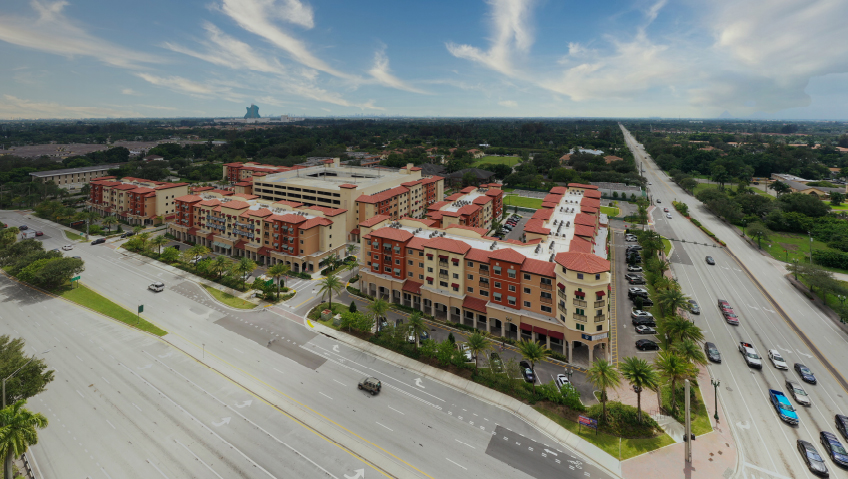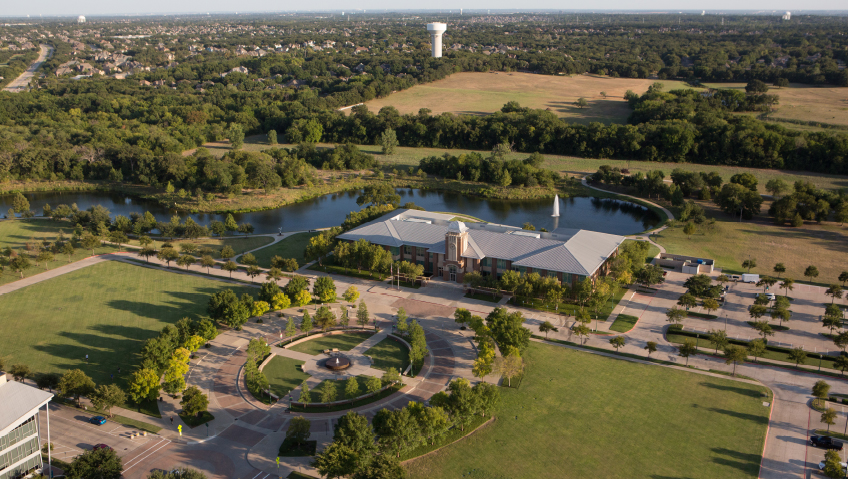As the United States begins to come out from the shadow of COVID-19, emerging communities are finding themselves competing with large urban centers. America’s heartland is providing older manufacturing communities with a new lease on life, offering new opportunities and technologies. One need look no further than Highland, Illinois.
Nestled in central Illinois between Springfield and St. Louis, the growing town of Highland provides a unique blend of manufacturing heritage and modern entrepreneurship and technological development. With its trademark Midwestern can-do, the community promises new growth for workers and businesses alike.
Newly inaugurated Mayor Kevin Hemann, who boasts a 45-year career in Highland’s manufacturing sector, hopes to leverage that experience in his new role. “Highland’s always had a reputation as a manufacturing community and an industrial leader,” he says, reflecting on Highland’s founding by Swiss and German immigrants in the mid-19th century.
Mayor Hemann relates how the founders’ entrepreneurial spirit lives on today, despite an evolving economy and landscape. Indeed, entrepreneurship and manufacturing lie rich in the town’s heritage: one company that put Highland on the map was Pet, Inc., which first developed and manufactured sweetened condensed milk on an industrial scale as far back as the 1880s.
Great geography
Highland’s geography sets it in just the right spot in Illinois – close enough to major metropolitan areas for citizens to take advantages of those amenities when required, but far enough to avoid urban congestion. St. Louis, Missouri (30 miles west) and Illinois’ state capital of Springfield (80 miles north) provide vital infrastructure such as airports to enhance Highland’s expansion and business growth.
Further, Highland is located on or close to several vital interstate highways, offering ready-made distribution networks for manufactured goods.
Interstates 55 and 57 go north and south to Chicago and Memphis, respectively, while I-70, just four miles from downtown Highland, knifes across the Midwest and Plains states from Pittsburgh to Denver. “Being centrally located is a major plus for us,” Hemann says.
In the town itself, Highland offers distinctive advantages to attract business development. The town’s power plants and utilities are publically owned, guaranteeing fair prices and clear incentives for business growth, plus far more amenable customer service.
Gigabit community
Telecommunications is also a public entity, with Highland Communications Service (HCS) providing telephone, television and internet capabilities to town residents at lower prices than national suppliers, but with the same quality.
It is Highland’s publicly-owned utilities that are spurring one of the town’s newest and most remarkable developments.
Known as the Gigabit community, this fiber-to-the-premises (FTTP) network promises to make Highland a place for 21st century business. The COVID-19 pandemic has definitively proved that many service-based jobs can be done remotely, and with Highland’s cutting-edge internet capabilities, workers may live in Highland but work anywhere in the world.
“We are fiber-connected around the whole community, and not many communities can say that,” Hemann says proudly, adding that over a quarter of Highland’s roughly 10,000 residents are now on the network. “It’s been a great success story, really.”
The network has required considerable time and investment, with not a few citizens wondering why their tax dollars are being invested in this project. But Hemann says that since Highland already owned its own infrastructure, a publically-owned utility and telecommunications grid was the next logical step. “We were able to do that, and do it in an economical way.”
Hemann hopes the Gigabit project will help dispel outdated stereotypes of Midwestern states and bring the community into the future. He intends Highland to be the first of these next-generation communities, leveraging Illinois’ location as a transportation hub to spur growth. As Mayor, he sees a grassroots, bottom-up approach to accomplishing this goal in Illinois. “It’s going to start from the city level, to the state level, until we find a way to make it better.”
Gigabit’s affordability and nearby infrastructure are already attracting high-tech businesses such as Embrace Software, which provides software and grant writing for special education teachers. But upon relocating to Highland, the company faced a shortage of qualified coders.
A lucrative private-public partnership ensued to solve the problem: “Through the cooperation of the city, and the Highland School District, we helped fund a coding class in the community school here,” Hemann says. This helped the community provide a ready-made pipeline for technologically-proficient graduates, without the time or expense of college education. “It’s a great cooperation between the city and the school business.”
A new breed
Embrace Software exemplifies the new breed of business Mayor Hemann and his staff are planning to attract to Highland: next-generation, high-technology industries that can utilize Highland’s infrastructure and provide lasting jobs.
“With what we can supply them,” he remarks, “we should be able to attract and be a great place for them.” From banking to software developers like Embrace, Hemann hopes to leverage Highland’s close proximity to vocational and higher schools – 18 within 40 miles – to attract and retain the next generation of American workers. “We should be able to attract the type of employee these companies need.”
These high-tech industries will further diversify Highland’s existing industrial base, which continues to reflect its founding and history. Heavy equipment manufacturers such as Eaton, Wicks and Dutch-based Trouw Nutrition have operations right in Highland, choosing to leave larger urban areas for a smaller community. Local construction contractors and excavators help spur development, providing the necessary labor and equipment right in town.
This economic redevelopment is helping the town reinvigorate its downtown area, which has suffered sadly in recent decades, as those in many American towns have.
First, fix the façade
Hemann’s government is getting involved with the aptly named Façade Improvement Program, which offers a 25 percent reimbursement on eligible façade improvements, up to $10,000. “We hope this will help incentivize businesses to reinvest into their storefronts and spur investment in the community as whole,” says Economic Development Coordinator Mallord Hubbard, who reports a high interest from the area in the program.
Additional community economic incentives include two Tax Increment Financing (TIF) districts, which allow the city to refinance property taxes towards economic development and infrastructure. A separate Business District recoups property and sales taxes for further infrastructure development, and also reimburses specific business development projects.
“These programs have been vital to the increase in investment we have seen in the past several years, and the new Façade Program appears to be another great tool in our toolbox,” Hubbard says.
As an example of Highland’s recent growth, Hemann cites a case that involved the closing of a local grocery store, after decades of business. Instead of the building standing empty for a prolonged period, the opportunity in Highland quickly attracted the established Midwest furniture company Kloss Furniture to come to town and set up shop.
Other newer additions include St. Louis-based Shalafly Brewery, which is now in the works of opening a new location in Highland’s downtown square. “My goal is to see that grow, because that brings people to our community,” Hemann says.
Attracting people
But workers do not move to towns for jobs alone. To heighten its livability, Highland has been investing in community infrastructure as well as business developments. New senior living centers are nearly completely sold, and a shuttle bus service helps transport the older population where they need to go.
This mass transit infrastructure is intended to help spur urban development, bringing reliable transportation options to those without vehicles.
Highland is also fortunate in its affordable housing rates, with Hemann estimating a median price of around $450,000 for an average house.
New subdivisions are bringing not only construction jobs but new residents, taking advantage of the town’s new opportunities. “We’re quite fortunate that we have really good developers in town, and the city has programs to incentivize those developers,” Hemann says.
“I have seen more development in the last year and a half than I have in the last ten years,” he adds. In addition to houses for families, several apartment complexes are also in various stages of construction. “I think we’re on a wave of growth in the other direction, so I hope that continues.”
Additionally, thanks to new city ordinances requiring amenities such as gutters and sidewalks, the newer subdivisions are also more attractive to potential buyers. “It’s attracting a lot of really nice people to live here,” Hemann says. The town’s street art festival, an annual tradition, brings out the entire town every September. A wealth of parks provides outdoor activities, and nearby Highland Silver Lake offers hiking, boating and fishing for hobbyists.
A community for all ages
As has happened in many other towns of a similar size in the region, many of Highland’s youth have in the recent past moved to larger areas. In response, Hemann and his staff are working to ensure that the town will transform into a beacon for new and younger workers.
With Highland’s new developments in business and infrastructure, Hemann hopes the town’s emerging workers will see Highland with the same fondness as Springfield or St. Louis: “We want them to feel Highland is just as good,” he says.
Regular business surveys ensure the town’s existing industries do not feel neglected, so the town can manage the delicate balancing act of attracting new business while retaining its present established and loyal Old Guard.
As Highland moves into a COVID-free future, Mayor Hemann places his faith in the town’s strong community spirit.
“If you go around town and look at some of the venues that we put on, it’s tremendous to see,” he says, highlighting such traditional festivals as Kirchenfest, sponsored by the local Catholic community since 1970.
Hubbard agrees: “We’re a connected city,” he says, applying the term both to the alliance between business and community leaders, and the literal Gigabit connection allowing people to work from home. These strong connections will surely help Highland go from strength to strength as it grows.






